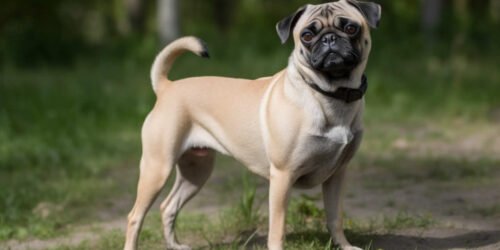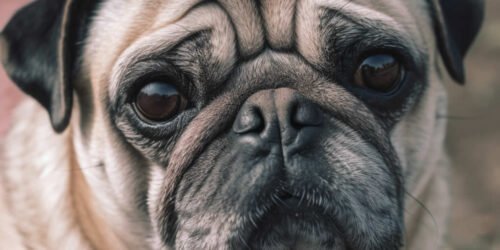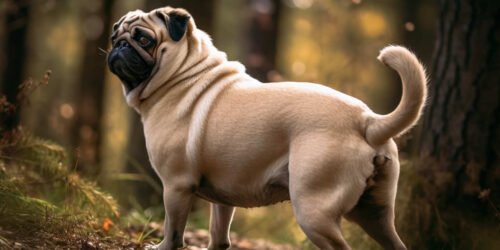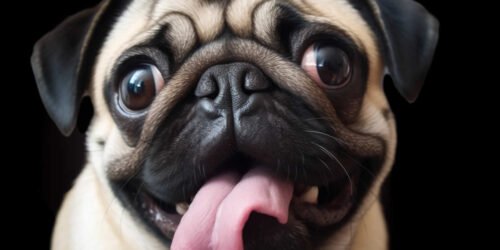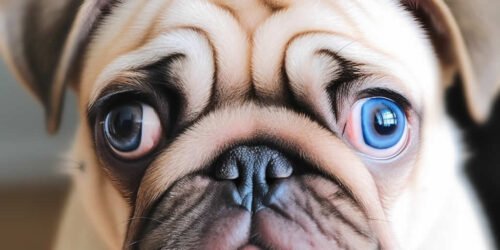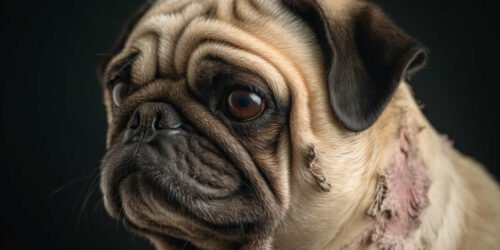What Is A Panda Pug?
Introduction: What Is A Panda Pug?
Have you ever wondered what a Panda Pug is? Imagine the adorable features of a pug combined with the striking black and white coat of a panda bear! This rare and eye-catching breed has captured the hearts of dog enthusiasts worldwide.
In this blog post, we’ll dive into everything you need to know about Panda Pugs – from their unique appearance to their fascinating history.
Table of Contents
- Introduction: What Is A Panda Pug?
- Appearance And Characteristics Of A Panda Pug
- Origin And History Of Panda Pugs
- Caring For A Panda Pug
- Conclusion
- Frequently Asked Questions
Key Takeaways
- Panda Pugs have a unique and eye – catching black and white coat coloration that closely resembles that of a panda bear.
- This breed is a hybrid of pugs and Tibetan Spaniels, combining the best traits of both breeds like their charming personality, small size, and distinctive appearance.
- To ensure its health and happiness, Panda Pugs require regular grooming, exercise, high – quality diet with proper nutrition balance appropriate for their breed size; precautions taken to avoid joint problems due to dysplasia issues common in small dog breeds or respiratory complications from BOAS; early socialization training can go along way in raising happy little companions.
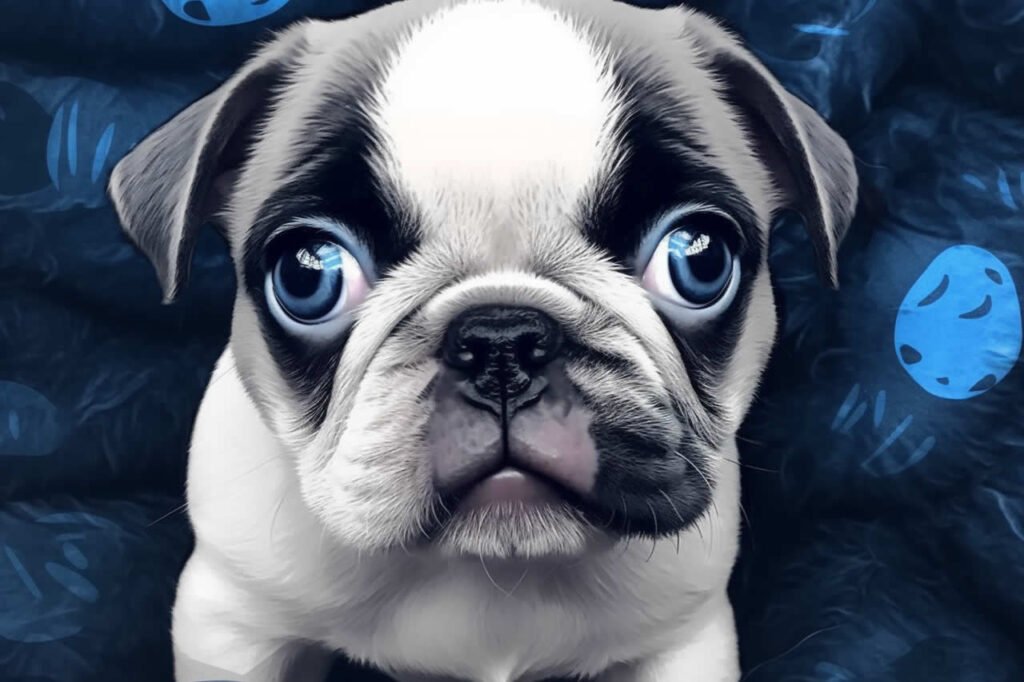
Appearance And Characteristics Of A Panda Pug
The Panda Pug is a unique dog breed with a distinctive black and white coat coloration that resembles that of a panda bear, along with physical attributes like wrinkled skin, a flat face, and small ears.
Unique Coat Color And Markings
One of the most striking features of a Panda Pug is their unique coat color and markings that set them apart from other canine breeds.
Their appearance makes them quite eye-catching, especially to those considering adding a pet pug to their household. The main body is covered in a white coat, while the black markings often extend down to their feet as well.
People find these unusual markings endearing and love how it highlights the adorable wrinkles on these dogs’ faces.
Physical Attributes And Size
As a potential Panda Pug owner, understanding the physical attributes and size of this adorable canine breed is essential. These compact and muscular animals have short legs, resembling their Pug ancestors.
The distinct coat color and facial markings are what truly sets Panda Pugs apart from other breeds. Their predominantly white coat features unique black markings around the eyes, ears, and feet—hence the name “Panda” Pug! This striking appearance adds to their charm and makes them stand out as companion animals.
Origin And History Of Panda Pugs
The Panda Pug is a hybrid breed that originated from China in the late 1990s, resulting from crossbreeding between Pugs and Tibetan Spaniels; read on to learn more about its fascinating history.
Crossbreeding Of Pugs And Tibetan Spaniels
Crossbreeding pugs with Tibetan spaniels may seem like an unusual combination, but it has resulted in the adorable and distinctive Panda Pug.
One example illustrating how these breeds complement each other is their shared history as companion dogs originating from ancient China. Pugs were bred to be loving lap dogs for emperors, while Tibetan Spaniels spent time in Buddhist monasteries around 400 BCE providing companionship to monks.
Popularity And Demand
As a highly desirable and relatively rare breed, Panda Pugs have been gaining popularity among dog lovers in recent years. Their unique coat color and appearance combined with their affectionate personality make them an ideal companion pet for many people.
Many potential owners are drawn to the Panda Pug because of its ties to ancient Chinese culture. The breed is said to have originated from dogs that were once kept as pets by Chinese emperors, which adds an air of prestige and history to this charming canine companion.
Caring For A Panda Pug
To ensure a healthy and happy Panda Pug, regular grooming and maintenance are necessary, including weekly brushing of their smooth coat and cleaning of facial folds.
Grooming And Maintenance
Grooming and maintenance for your Panda Pug is essential to keep them healthy, happy, and looking their best. Here are some key things to keep in mind:
- Brush their coat regularly: Panda Pugs have a smooth coat that requires regular brushing to prevent matting and shedding. Brush their coat at least once a week using a soft bristle brush.
- Bathe them when necessary: Panda Pugs only need bathing once every 2-3 months unless they get dirty or smelly. Use a high-quality dog shampoo made for sensitive skin.
- Trim their nails: Trim your Panda Pug’s nails every few weeks to prevent discomfort and injury.
- Clean their ears: Check your Panda Pug’s ears regularly for signs of infection, wax buildup, or debris. Use a cotton ball and solution recommended by your vet to clean their ears.
- Ensure proper dental hygiene: Dental health is important for any dog, including Panda Pugs. Brush their teeth with canine toothpaste regularly or provide dental chews as an alternative.
- Feed them high-quality food: A balanced diet is crucial for the health of your Panda Pug’s coat, skin, eyes, and overall well-being.
- Exercise regularly: Like all dogs, Panda Pugs need daily exercise to maintain good health and avoid obesity.
- Monitor skin and eye issues closely: Pugs are prone to skin yeast infections and eye problems like corneal ulcers or dry eye syndrome). Regular grooming can help prevent these issues from occurring.
By following these tips, you can ensure that your new furry friend stays healthy and looks great!
Health Concerns
As with any breed of dogs, health concerns are a crucial consideration when deciding to bring home a Panda Pug. Due to their small stature, Panda Pugs can be prone to hip and elbow dysplasia, which can cause mobility issues as they age.
It is essential to ensure that your Panda Pug receives proper nutrition and exercise from an early age.
Aside from joint problems, pugs in general tend to have a range of other health concerns such as allergies, skin irritations, dental issues, and stomach problems.
But with proper care and attention given regularly to your Panda Pug’s well-being by feeding them high-quality food appropriate for their breed size while avoiding overfeeding or excessive treats leading towards obesity; exercising them regularly without overdoing it that could lead towards injury; providing medication prescribed by vets if needed for allergy relief or other treatments related illnesses—Panda Pugs are relatively healthy compared to other dog breeds helping you enjoy happy moments together playing fetch or going on walks!
Training And Socialization Needs
To best care for a Panda Pug, it’s essential to understand their training and socialization needs. Here are some important points to keep in mind:
- Early puppyhood experiences: Start socializing your Panda Pug early on, ideally between the ages of 3-12 weeks. This is a critical period for your pet to learn about the world around them.
- Obedience trials: Panda Pugs are intelligent dogs that can excel in obedience training with proper guidance and training techniques.
- Canine training: Consistency is key when it comes to training your Panda Pug. Training sessions should be short and frequent, with positive reinforcement methods being used throughout.
- Dog socialization: It’s essential to expose your Panda Pug to different people, sights, sounds, and experiences when they’re young so that they develop into well-rounded dogs.
- Agility training: Many dog owners love participating in agility trials with their pets, which involves navigating an obstacle course with speed and accuracy – something that many Panda Pugs enjoy!
- Exercise regimen for dogs: To stay healthy and fit, Pandas Pugs need daily exercise as part of their routine. A simple walk or playtime session can help keep your pet happy and healthy.
- Walking routines for dogs: To meet their minimum daily activity requirements of 30 minutes per day, consider taking your Panda Pug on regular walks around the neighborhood or dog park.
- Dog health and fitness: Proper diet and exercise are crucial for maintaining good health in your panda pug.
In summary, providing proper training and socialization opportunities is vital to raising a happy and healthy Panda Pug that you will love having as a lifelong companion.
Conclusion
In conclusion, a Panda Pug is a rare breed of dog that combines the unique coat coloration of pandas and the physical attributes and size of pugs. This hybrid breed originated in China about 2,000 years ago and is still relatively uncommon today.
While they make great companion pets, caring for them requires special attention to grooming, maintenance, health concerns, training and socialization needs.
Frequently Asked Questions
1. What is a Panda Pug and how does it differ from a regular Pug?
A Panda Pug, also known as a parti-colored Pug, is characterized by its unique coat coloration of white and black patches resembling that of a panda bear. This differs from regular Pugs which typically have fawn or black coats.
2. Can I purchase a Panda Pug from any breeder or pet store?
Purchasing any dog requires research to find reputable breeders who prioritize the health and well-being of their animals. It’s important to avoid supporting puppy mills or backyard breeders who may not provide proper care for their dogs.
3. Are there special considerations when caring for a Panda Pug?
Just like with any other dog, providing proper exercise, nutrition and veterinary care are essential to keeping your furry friend healthy. However, due to the unique genetic makeup that produces the Panda coloring in some pugs, they might be more prone to certain health issues such as deafness or skin allergies.
4. Would adopting a rescued/abandoned Panda Pug be an ethical choice for me?
Adopting a rescued or abandoned dog can be both fulfilling and ethical decision since you’re saving them from potentially dire circumstances while giving them another chance at life in a happy home environment.For ensuring better selection,it’s advisable to visit local shelters & rescue centers where you can meet available pets in person while conducting background checks on adoption procedures & history of animal before making final choices.

